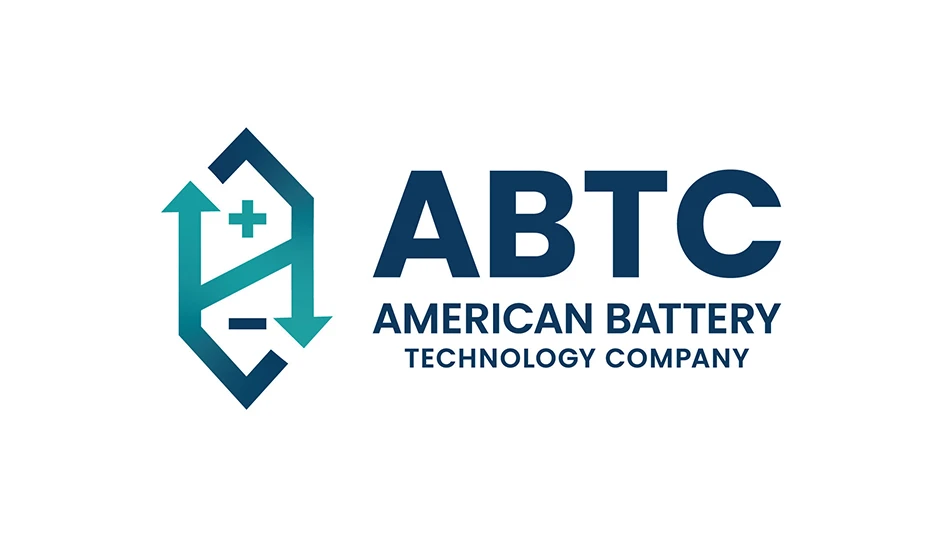 After a late summer upturn in prices in September—a blip that only served to confuse the market—supply and demand for ferrous scrap remain fairly balanced. Some sectors of the steel consuming market appear to be showing life, though the construction and automotive sectors remain weak. Steel mills continue to buy available scrap, and the export markets exert a strong, positive pull on demand whenever prices slip below a nebulous line set by buyers for Chinese mills.
After a late summer upturn in prices in September—a blip that only served to confuse the market—supply and demand for ferrous scrap remain fairly balanced. Some sectors of the steel consuming market appear to be showing life, though the construction and automotive sectors remain weak. Steel mills continue to buy available scrap, and the export markets exert a strong, positive pull on demand whenever prices slip below a nebulous line set by buyers for Chinese mills.
Some observers say the ferrous market will continue to trade at October prices, plus or minus $25, for the rest of the year.
A BIT SLUGGISH
“Things are good, although we are having a bit of a problem finding buyers for shred,” says Josh Cohen, founder and CEO of Falcon Metals L.P., with locations in Dallas and Terrell, Texas. Regional dislocation in that market is caused by the number of auto shredders in that area.
Cohen, who has been in the business for 30 years, says ferrous scrap should sell for $600 to $800 per ton if the prices from the 1980s are extrapolated to today’s market. However, nationwide, scrap remains in the $350-per-ton range for HMS (heavy melting steel) and at $370 for shredded material.
Noting the sizable price increases in nonferrous metals ranging from copper to gold, Greg Tellier, ferrous expert with Alpert & Alpert Iron & Metal Inc., Los Angeles, says, “Ferrous has been moving in its own direction.” The company also saw the $20 give-back of the September price increase heading into October. While Alpert & Alpert does not rely on exporting, Tellier says he figures that declining demand from China and India is the cause.
Demand from Asian buyers has slowed, confirms Yoel Dagmy, regional-corporate buyer for Anaheim, Calif.-based SA Recycling and West Coast Chapter president of the Institute of Scrap Recycling Industries Inc. (ISRI). “Flow is slow—but then flow hasn’t been there since the economy went to the dumps a couple of years ago.”
Dagmy says he feels job creation is the key to bringing back the economy—and, with it, the ferrous scrap market. But he says he does not expect a move to $600 any time soon. “It’s not going to happen without runaway inflation,” he says.
Marty Davis, Midland Davis, Moline, Ill., says his mill buyers were perplexed by the September ferrous price increase. “One mill we supply didn’t buy anything in September,” he says, adding that the mill said it simply could not understand why prices increased that month.
Then, the market began dropping in early October. “The economy is where it is for a reason,” Davis says. “New housing is non-existent. The auto business is up over a year ago figures but not versus three years ago. Nobody is building big buildings that require a lot of steel.”
Scott Fisher, COO at Sims Bros., Inc., Marion, Ohio, sounds miffed about the price discrepancy, too. “That price increase screwed us up,” he says. “The mills did not follow the increase—in fact, they actually pushed their numbers down. So there was a $25- to $30-a-ton discrepancy between what was published and the real world,” he says.
“Us scrap dealers have to find a better way to price,” Fisher says. He says he feels that some of the publications that offer pricing information simply are out of touch with the realities of the markets.
Despite the problems with pricing, however, Fisher says Sims Bros. has experienced decent scrap flow. Most yards can keep chugging along, as long as material continues to move.
KEEP MOVING
On the West Coast, recyclers are taking all the material they can get. “We need, want and desire more scrap,” says Aaron Coulter, assistant manager at Skagit River Steel & Recycling, Burlington, Wash. “It is a slow economy,” he says, agreeing with Davis that the overall slump affects ferrous scrap sales.
Still, local mills are buying the scrap material that is generated. Some industry observers say they believe the ferrous market will get better when the world economy works itself out of its current situation. An August 2010 report from Global Industry Analysts Inc. predicts that global ferrous scrap markets will grow to 631.5 million tons by 2015.
While much of the scrap on the West Coast is exported, Bloch Steel Industries, Seattle is another exception to that rule. The company gets most of its material from industrial and demolition projects and uses it at its new steel facility.
“We have good flow at the moment,” says Dennis Bloch, vice president of the scrap division. However, much of that is in light of a large demolition project the company is currently handling. “Otherwise, it is nothing to write home about. We are seeing some type of drop.”
Randy Castriota, Castriota Metals Recycling, Pittsburgh, also is the beneficiary of some demolition jobs that were done in the Steel City area. “Scrap is not flowing as well as it has in past years, so we have some need for metal,” he says.
On a one-to-10 scale, Castriota would put flow at a six. “Our nonferrous is helping us keep up,” he notes.
Davis says Midland Davis was able to sell the material it wanted to move. “We didn’t know that October would go down,” he says. “It’s always a crapshoot.” However, he says he noticed the warning signs in mid-September, when a number of shredders dropped their prices. “That was a good indicator the market would be down in October,” Davis adds.
Elsewhere, mill buyers are cautious. “The mill here is going to back off if it can,” Bloch says. Unless there is an upsurge in container shipments (which Bloch does not do), it is unlikely that the mill will get any more aggressive.
That export business sets the trend in the Northwest, with material going to Asia and India.
INTERNATIONAL DEMAND
China and India remain the ports-of-call that lead consumption. Some say they see life in Brazil, too, as its economy has rebounded from hyper-inflation a decade ago to become one of the more stable South American economies today. Turkey buys, too, but Asia is the 800-pound gorilla in the market. Tellier says, “It’s been years since it made sense for ferrous to go anywhere but Asia.”
Getting scrap to send overseas is a challenge in some areas. “Manufacturers that used to have one or two boxes every day are down to one a month,” Dagmy says. “Manufacturing has been down for the last two years.”
He notes that China and India remain powerful figures in the market, but adds that they have cut back recently. “Then you are relying on Taiwan, Indonesia and Korea,” Dagmy continues. “It is a very difficult market.”
Turkey also has shown a recent proclivity to come into the market, buy six or eight loads and then back off for a while.
“The Chinese do not like to pay high prices,” Dagmy says. “When prices approach $400 delivered, the Chinese back out completely. When HMS drifts back to the $300 level, and the price to them including freight is about $360, they come back in.”
Some yards have adjusted to buyers for Chinese mills and their “buy low or not at all” strategy. “As long as China continues to do what they are doing, we’ll be OK,” Castriota says. “When China opens the flood gates, the markets are fine.”
He notes the burgeoning demand for automobiles—and thus, steel—in China. “Indirectly, that demand will help our domestic market,” he observes. “As long as China and Turkey continue buying, we’ll be okay,” Castriota says.
The same effect is evident elsewhere. While Skagit sells most of its material locally and generally does not sell material overseas, because of the company’s location in the Pacific Northwest, its market is largely determined by what happens in and around the Pacific Rim.
Even as far inland as Ohio, markets are affected by what goes on in the international arena. “As export demand comes to the market, it pulls scrap out,” Fisher notes. While Sims Bros. does little exporting of scrap, Fisher says increased demand along the coasts will create holes in supply that are echoed into his area and give him the ability to get a better price for ferrous material in the heartland.
INTO 2011
“I don’t see anything driving business further or reducing it,” Tellier says. “A lot has to do with China. Exporters are working two to three months ahead of the game and trying to maximize their margins.”
In mid-October, scrap to the Los Angeles dock fetched Alpert & Alpert about $300 per ton. “I don’t see it moving more than 10 percent either way,” Tellier says.
Cohen seems less optimistic. “I expect scrap will be down for the rest of the quarter,” he says. Part of that is because Chinese buyers are holding back. Turkish buyers also are buying less than they have in recent history.
As a result, Cohen says he sees inventories at local mills going up and is somewhat concerned about a slowdown. He regularly passes the Gerdau mill site and sees the stockpiles getting higher. “I’m not getting the inquiries (from overseas) that I used to get,” he adds.
Dagmy is more optimistic. He says he expects the Chinese to be back in the market by early November and to hang around through November and December. “It takes two or three weeks to get a cargo to their port and deliver it to the mill,” he notes of shipments to China. With lower prices and a need for material, he says he expects China to be active again.
Winter typically sees a slowdown in scrap movement. Even though the Pacific Northwest has relatively mild winters, the early fall has Bloch concerned. “My inflow has not been that great,” he says.
“We will always be safeguarding under these conditions,” Bloch says. “I wonder if we will have enough scrap to get through the winter months.”
Davis is another who does not see the market bouncing back soon. Midland Davis just started handling material from peddlers in March. While the company still does not do a lot of peddler business, the September price increase did encourage sales.
“People with stuff brought it in,” Davis says. However, it was no great rush, partly in light of the fact that the small-lot sellers are still getting used to the idea that they can come to Midland Davis to sell scrap. “We are in the growing stage (with these smaller lots). Higher prices always help generate more interest with ferrous,” he adds.
Peddler traffic also helped perk things up at Skagit River. “We were able to rally a bit,” says Coulter. “That largely had to do with the peddlers.”
Some signs of life are appearing in other areas, as well. “Some of our customers on the manufacturing side are seeing a pickup in their business,” Fisher says.
As with all the scrap dealers in the Midwest, Fisher says a lot depends on the automotive industry. Absent major, unexpected changes in the auto sector, Fisher says he expects the market will move sideways or drift somewhat lower.
“I think the market will be up and down,” Davis says, explaining that he does not anticipate the kinds of $200 price swings that the market saw in 2008. Rather, he anticipates the market will move in relative gentle waves of $20 or $30.
By the New Year, Davis says he expects the market will be at roughly current levels.
“Historically, the market is priced fairly,” Castriota says. While he says he agrees the prices of two years ago were great, the market is about where it should be, given the economy.
He continues, “We still have a long way to go. But whether the market is up or down, we work the margins.”
The author is a freelance writer based in Cleveland and can be contacted at curt@curtharler.com.
FERROUS SCRAP AT A GLANCE
RECENT PRICING HISTORY |
MAJOR END MARKETS |
FLOW PATTERNS |
SUPPLY & DEMAND FACTORS |
| Oct. 2010: $342 Oct. 2009: $265 Oct. 2008: $230 Oct. 2007: $289 |
Steel mills consume the majority of ferrous scrap, followed by iron and steel foundries. | North American ferrous scrap is shipped to mills domestically and around the world, with China, Turkey and South Korea among the leading export destinations. | Scrap generation depends on industrial production, demolition activity and scale pricing. Demand is tied to steel output for the auto and construction industries. |
Get curated news on YOUR industry.
Enter your email to receive our newsletters.

Explore the November 2010 Issue
Check out more from this issue and find your next story to read.
Latest from Recycling Today
- Circular by Shapiro releases "5 for Five" sustainability series
- Graphic Packaging set to close Ohio CRB facility
- Ameripen voices support for Maryland EPR bill
- Matalco to close Canton, Ohio, plant
- Maryland county expands curbside recycling to include electronics
- California EPS ban will be enforced
- YKK AP America introduces BetterBillet
- Fresh Perspective: Cameron Keefe





